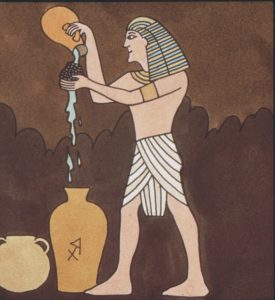We have had access to clean and safe drinking water daily, through our taps, bottles and drinking Water Dispensers, and it is all thanks to a very streamlined water filtration process. Compared to the past, Filtration processes have drastically improved due to developments in technology. But how was it done in the past? Let’s find out a little more.
Water Purification (BC)
Water purification processes date back to 2000 BC in Sanskrit medical texts, wherein water was purified using heat. Sand and Gravel filtration, Boiling and Straining ensured that water had no foul taste and prevented it from being cloudy.
1800s and 1900s
In Scotland, a municipal water purification plant utilizing gravel and sand filters was built in 1804. Following that, Robert Thom designed the slow sand filters. However, the slow sand filtration occupied too much space. Hence, it became less feasible. It was in the 19th century that individuals recognized the implications of impure drinking water. This was due to the discovery by John Snow when he identified that the sewer water had polluted the water pumps in London.
Egypt
Egyptians had identified the first recognized chemical water treatment. They had learned about coagulation, where they utilized aluminium sulphate, iron sulphate, or both to obtain suspended particle settlement. This allowed the suspended particles to clump together, which allowed the filtration process to accelerate, which meant that there would be more water for individuals to consume!
Ancient Rome
The Romans built aqueducts that assisted them in obtaining water from springs or mountains to the city area, leveraging gravity. These enabled the water to remain safe for consumption as it was built underground and hence, was away from pollution.
The Romans and Greeks also used sand filtration, water settling, and stowage in copper pots to ensure safe and clean drinking water.
Ancient Greece
The Greek physician, Hippocrates, created the Hippocrates Sleeve – a cloth bag that allowed the filtration of boiling water. It enabled them to eradicate the sediments that led to the water tasting or smelling foul. This set the stage for Sir Francis Bacon to venture into the process of desalination.
Present Day
At present day, during the water filtration process, the water goes through filters that are made up of (1) Varying Pore Sizes and (2) Materials – mainly Sand, Gravel, and Charcoal. Currently, Reverse Osmosis is the most common water filtration method to treat salt water, or recycled water for consumption. The membrane technology removes the dissolved salts and impurities through the use of fine pores. The water is then directed to our pipelines and into our Taps, Showers and Water Dispensers. Despite such vast advancement in technology, in 2022, the World Health Organisation and United Nations International Children’s Emergency Fund shared that 2 billion individuals do not have access to safe drinking water. In light of this, let’s think about how fortunate we are and use water responsibly and save as much as we can!

